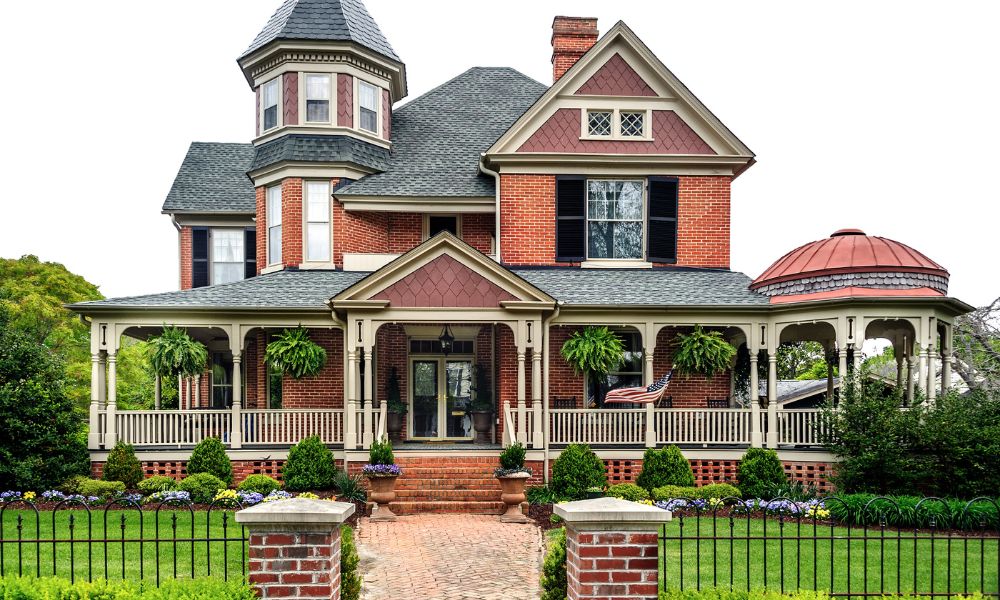Victorian houses stand as architectural time capsules, capturing the opulence and quirkiness of an era known for its extravagant style. Understanding the unique aspects of these homes can deepen the appreciation of homeowners enamored with the historic charm feel of this period. Here are some interesting & fun facts about Victorian houses, whether you’re lucky enough to own a Victorian property or are simply curious about their legacy.
Eclectic Mix
Victorian houses represent an eclectic mix of architectural influences. Victorian homes rose in popularity during the long reign of Queen Victoria, from 1837 to 1901. During this time, rapid industrialization and increased global contact allowed the British Empire access to a wide variety of design elements. This mélange is evident in the intricate details of Victorian homes, which often include elements from Gothic Revival, Italianate, Second Empire, and Queen Anne architectural styles. The result is a mixture of turrets, gables, and bays, creating a building that’s as interesting as it is unique.
Color
The importance of color is another interesting and fun fact about Victorian houses. The muted, more historically accurate shades we associate with the homes today were not always the norm. Victorian builders had access to new synthetic pigments, which sparked a trend for more vibrant and varied colors. The houses often featured several hues to highlight specific architectural features. This vibrant color palette reflected the era’s prosperity and optimism, an attempt to bring the joy and diversity of life into the homes themselves.
Home Technology
Many associate Victorian times with aesthetic splendor, but the period also witnessed significant advancements in home technology. This was an age of scientific exploration and innovation, and many of these breakthroughs found their way into domestic life. The luxury of gas lighting, central heating, and even rudimentary indoor plumbing found their way into many Victorian homes. These improvements were not only practical but also symbolized a shift in the experience of home life, making it more comfortable and convenient.
Social Class
Class and architecture have always intersected, and the Victorian era was no different. A home’s design usually indicates the social status of its owner. High ceilings, plenty of windows, and detailed woodwork were signs of affluence, while simpler, more austere designs were typical of working-class homes. The distinctions were not just aesthetic; they also reflected the differing cultural and social norms of the time. Understanding these nuances offers a glimpse into the social fabric of Victorian society and how it manifested in its buildings.
Victorian Houses Today
Despite the challenges of maintaining an older home, the enduring charm of Victorian houses has not waned. Many homeowners appreciate their unique history and individual character, seeing the opportunity for personal expression and restoration. Living in a Victorian home today offers a sense of connection to a bygone era. Modern craftspeople skilled in historical restoration can help update a Victorian house while preserving its authentic character.
At Mr. Spindle, we can help repair or rebuild your Victorian-era staircase with our 4×4 newel posts. Made in a variety of designs in your choice of wood species, the newel is a focal point for anyone ascending or descending your staircase. Browse our selection to find the best style for your one-of-a-kind home today.

